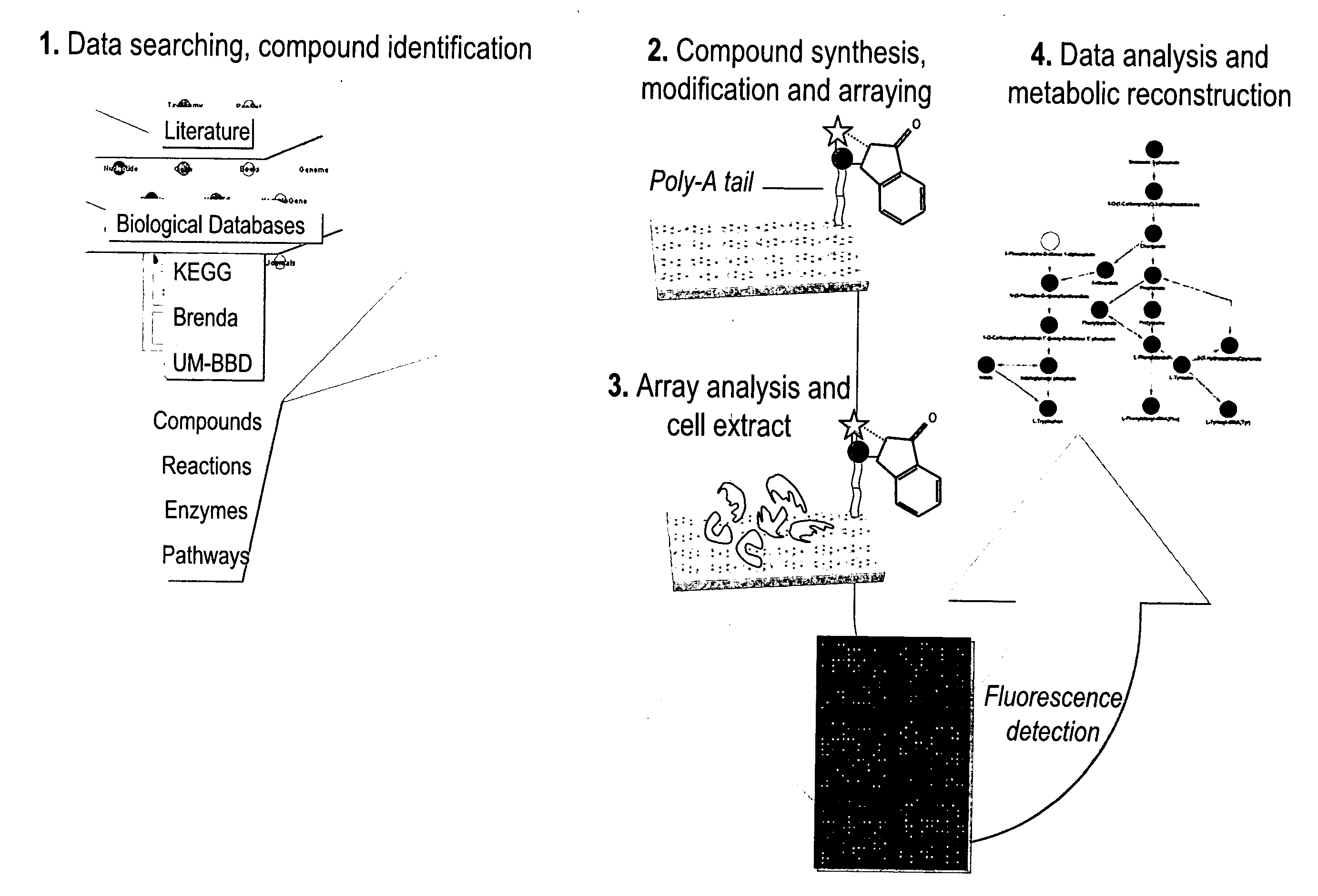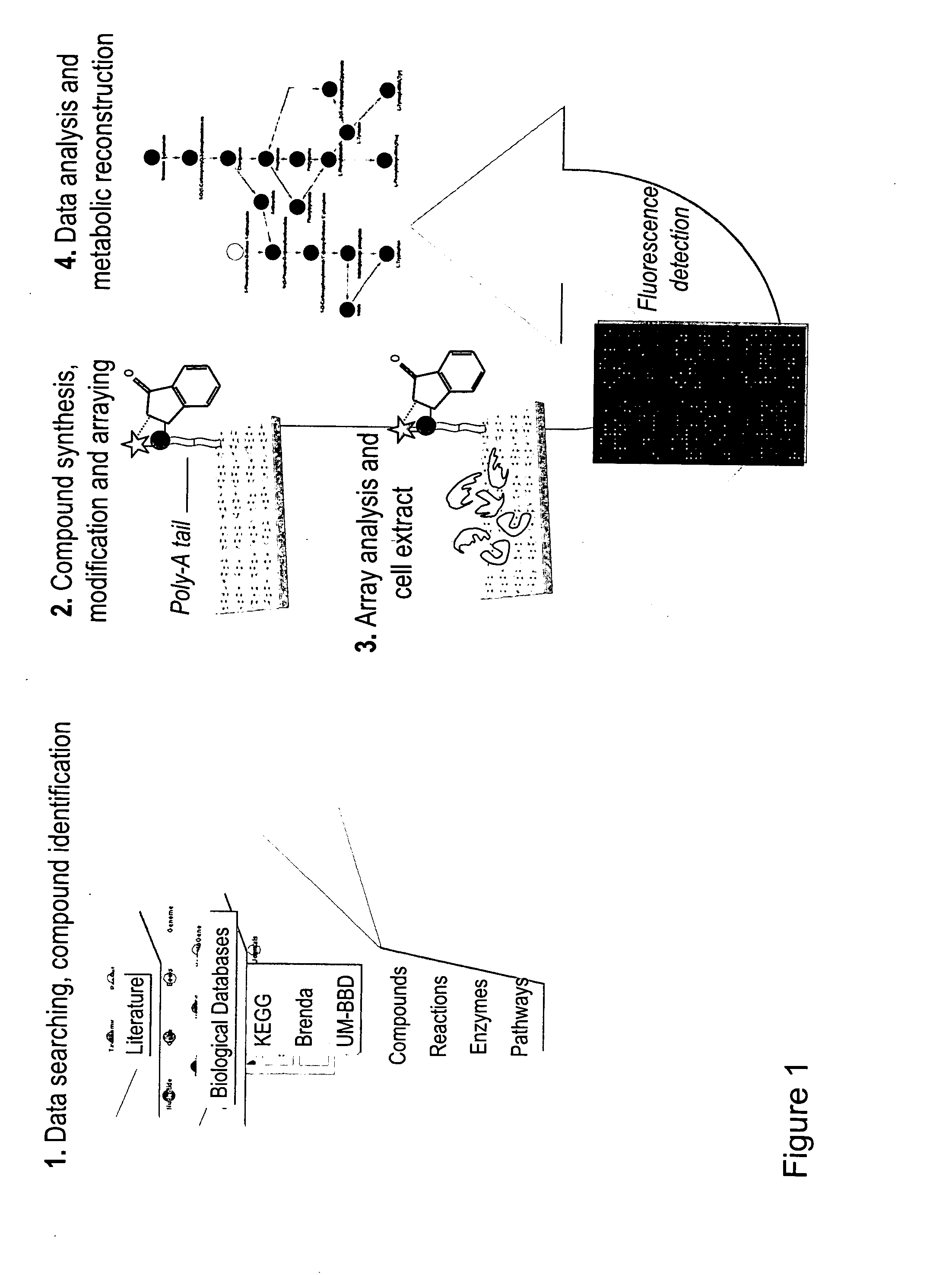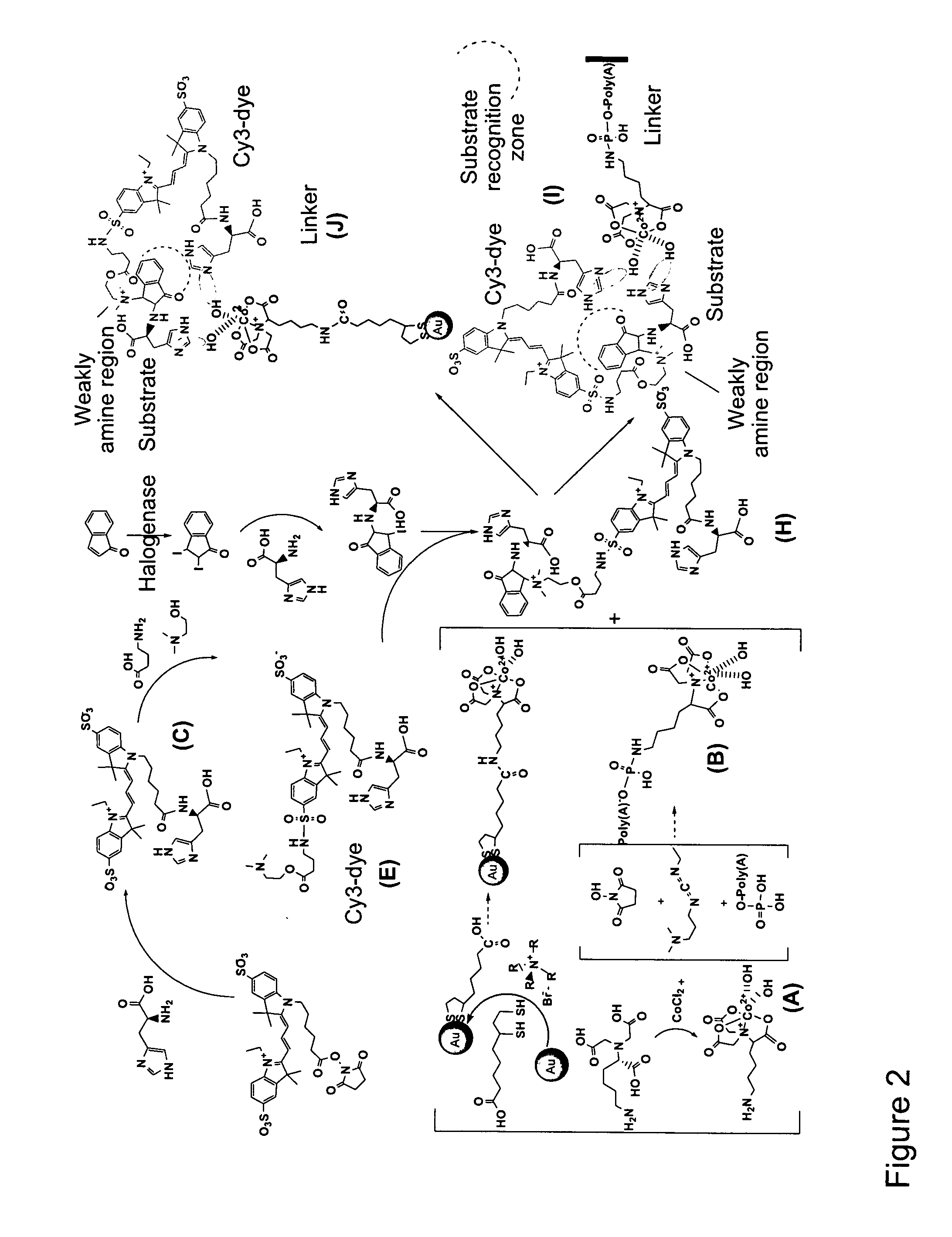Probe Compound for Detecting and Isolating Enzymes and Means and Methods Using the Same
a technology of enzymes and probe compounds, applied in the field of probe compounds for detecting and isolating enzymes, can solve the problems of adding further uncertainties to analyses and predictions based, unable to derive and is difficult to achieve global metabolic overviews of non-sequenced organisms or communities of organisms. it is easy to use, reproducible, reproducible and robust high-throughput detection results
- Summary
- Abstract
- Description
- Claims
- Application Information
AI Technical Summary
Benefits of technology
Problems solved by technology
Method used
Image
Examples
example 1
General Techniques
[0096]Unless specified otherwise, reactions were carried out with dry solvents freshly purified by passage through a column of activated alumina (A-2) and supported copper redox catalyst (Q-5 reactant). All other reagents were purified according to standard literature methods or used as obtained from commercial sources.
[0097]NMR spectra of all compounds were recorded at 600, 500, 400, or 300 MHz, using Varian I-600, Varian I-500, Varian M-400, Varian M-300, and Bruker Biospin 300 instruments. 1H NMR chemical shifts were reported relative to residual CHCl3 (7.26 ppm). 13C NMR data were recorded at 125, 100, or 75 MHz, using Varian I-500, Varian M-400, or Bruker Biospin 300 MHz instruments, respectively. 13C NMR chemical shifts are reported relative to the central line of CDCl3 (77.0 ppm). 59Co NMR measurements were carried out at room temperature with Bruker ASX-200 (B0=4.7 T, Larmor frequency v0=48.1 and 52.9 MHz in 59Co resonance, Bruker MSL-300 (B0=7.1 T, v0=71.2...
example 2
Bacterial Strains, Culture, and Growth Conditions
[0100]E. coli DH5F′ was used as a recipient for pGEMT plasmid (Promega) constructs containing cloned PCR fragments of P. putida KT2440 encoding hypothetical proteins and metagenomic proteins. E. coli TOP10 (Invitrogen) was used as a recipient for pCCFOS vector (EPICENTRE) constructs. E. coli cultures were grown in Luria-Bertani (LB) medium and incubated at 37° C. on an orbital platform operating at 200 rpm. When required, cultures were supplemented with the following antibiotics: ampicillin (100 μg / ml), nalidixic acid (10 μg / ml) and chloramphenicol (12.5 μg / ml). P. putida KT2440 was grown in M9 minimal medium with 15 mM succinate as carbon source in 100-ml flasks shaken at 30° C. and 150 rpm from an initial turbidity at 600 nm of 0.02 to a final value of 0.7±0.05. Samples (3 ml) were removed, the cells harvested by centrifugation at 4° C., and the cell pellets were washed with 20 mM Hepes pH 7.0 before storing at −20° C. until use.
example 3
General Reactome Strategy
[0101]The general reactome strategy comprises five stages for array construction and protein-SMs transformation detection as follows (cf. FIGS. 1 to 3).
[1] Data Searching and Compound Identification
[0102]Initially, an extensive data mining effort, focused mainly on the Kyoto Encyclopedia of Genes and Genomes (KEGG Database: http: / / www.genome.ad.jp / kegg / ), the University of Minnesota Biocatalysis and Biodegradation Database (UM-BBD: http: / / umbbd.msi.umn.edu / ) and PubMed (http: / / www.ncbi.nlm.nih.gov / sites / entrez), was undertaken to produce a list of compounds to be synthesized that are substrates of one or more metabolic reactions and that collectively form most of the central metabolic networks of cellular systems. Additional metabolites characteristic of microbial metabolic activities were also identified for synthesis.
[2] Compound Synthesis, Modification and Arraying
[0103]A library of 2483 identified SMs was synthesized using the strategies specified in Tab...
PUM
| Property | Measurement | Unit |
|---|---|---|
| fluorescence | aaaaa | aaaaa |
| chemical structure | aaaaa | aaaaa |
| area | aaaaa | aaaaa |
Abstract
Description
Claims
Application Information
 Login to View More
Login to View More - R&D
- Intellectual Property
- Life Sciences
- Materials
- Tech Scout
- Unparalleled Data Quality
- Higher Quality Content
- 60% Fewer Hallucinations
Browse by: Latest US Patents, China's latest patents, Technical Efficacy Thesaurus, Application Domain, Technology Topic, Popular Technical Reports.
© 2025 PatSnap. All rights reserved.Legal|Privacy policy|Modern Slavery Act Transparency Statement|Sitemap|About US| Contact US: help@patsnap.com



